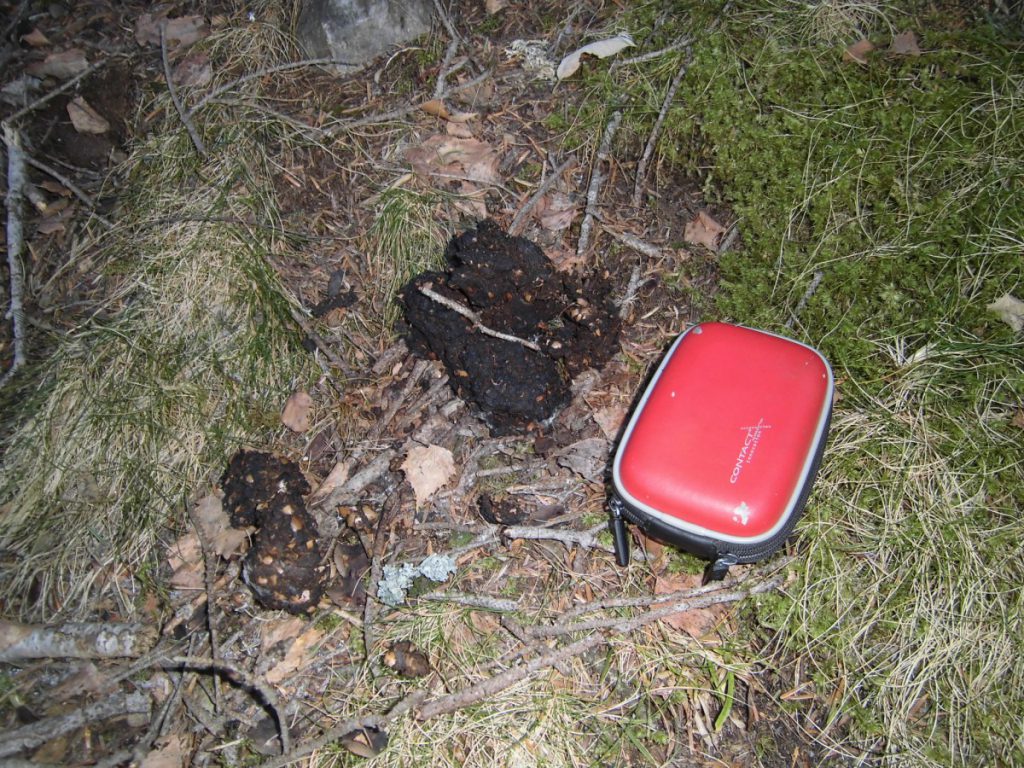Signs of the Bear’s Presence
Some traces left by the brown bear are highly distinctive, and if they are found in the mountains, the bear’s presence in the region can easily be confirmed. Other signs are not so easy to identify.
Its footprints are unmistakable due to their size and shape and the mark left by the five digits. They are similar to those of the badger, but are larger and have an extra digit. Their hind prints are like those of humans; the entire paw pad, all five digits and the claws are clearly visible. Front prints consist of the front of the paw pad and sometimes the rounded heel. Their prints are 10 to 15 cm wide.
 Bear prints
Bear prints

Bear prints
 Bear prints alongside fox prints
Bear prints alongside fox prints
Bear droppings vary widely in terms of shape and size, depending primarily on the food consumed by each individual. If the bear has eaten meat, they are more elongated, with hair and a foul odour. If it has eaten grass, there are several droppings; they are round and full of grass and insect remains, and the odour is less strong. If it has eaten nuts and seeds, they contain numerous seed hulls and are cylindrical and large in diameter.
 Bear droppings containing fruit
Bear droppings containing fruit
It is also possible to observe teeth marks and scratches on tree trunks at a height of 30 cm to 2 m; bears bite and scratch tree trunks and leave three to four claw marks.
Destroyed ant and wasp nests, large upturned stones, and small, round burrows located in inaccessible areas and covered with grass are also signs that a bear has been in the area. It is common to find bear fur in these locations.
